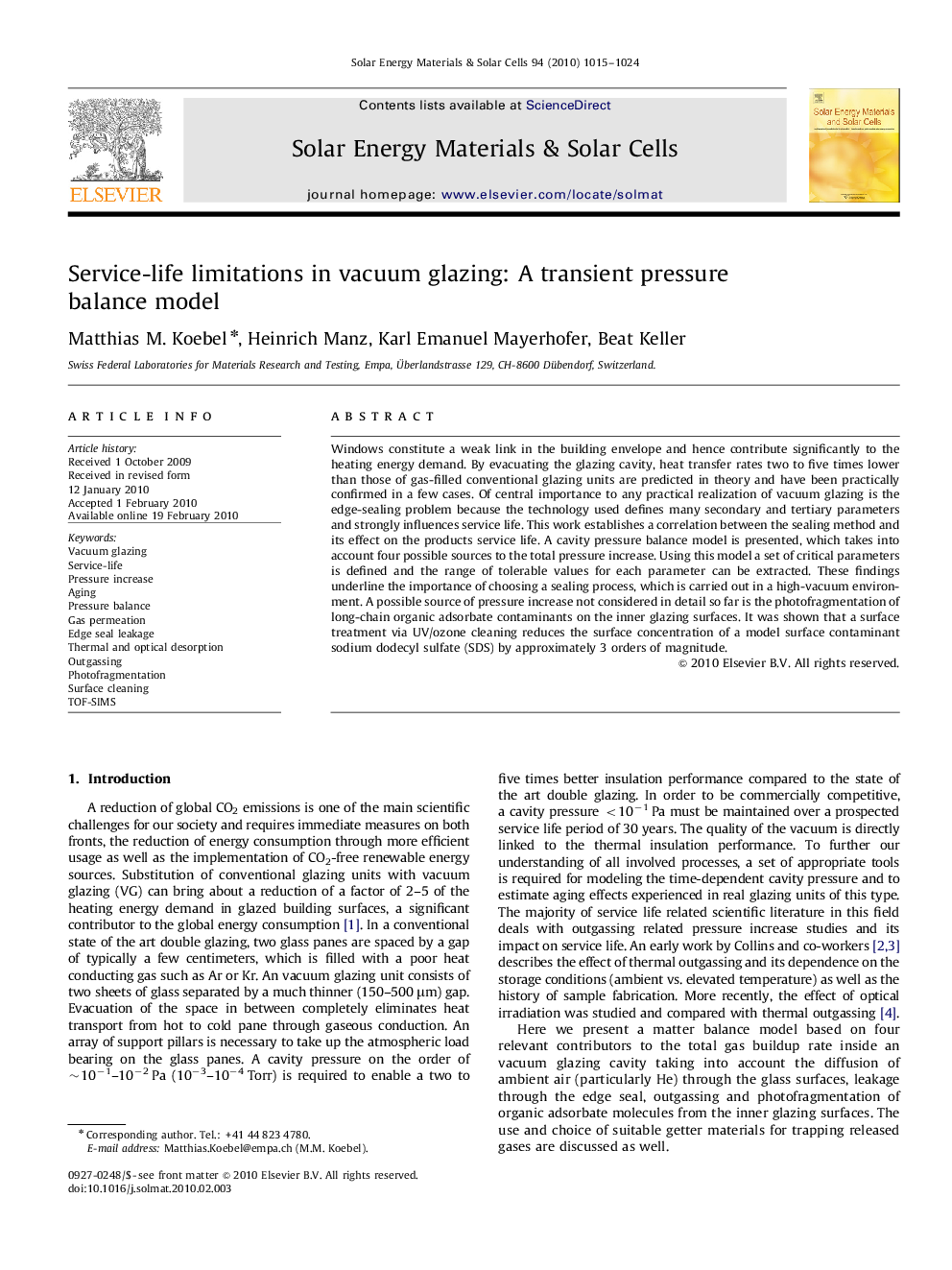| Article ID | Journal | Published Year | Pages | File Type |
|---|---|---|---|---|
| 80131 | Solar Energy Materials and Solar Cells | 2010 | 10 Pages |
Windows constitute a weak link in the building envelope and hence contribute significantly to the heating energy demand. By evacuating the glazing cavity, heat transfer rates two to five times lower than those of gas-filled conventional glazing units are predicted in theory and have been practically confirmed in a few cases. Of central importance to any practical realization of vacuum glazing is the edge-sealing problem because the technology used defines many secondary and tertiary parameters and strongly influences service life. This work establishes a correlation between the sealing method and its effect on the products service life. A cavity pressure balance model is presented, which takes into account four possible sources to the total pressure increase. Using this model a set of critical parameters is defined and the range of tolerable values for each parameter can be extracted. These findings underline the importance of choosing a sealing process, which is carried out in a high-vacuum environment. A possible source of pressure increase not considered in detail so far is the photofragmentation of long-chain organic adsorbate contaminants on the inner glazing surfaces. It was shown that a surface treatment via UV/ozone cleaning reduces the surface concentration of a model surface contaminant sodium dodecyl sulfate (SDS) by approximately 3 orders of magnitude.
